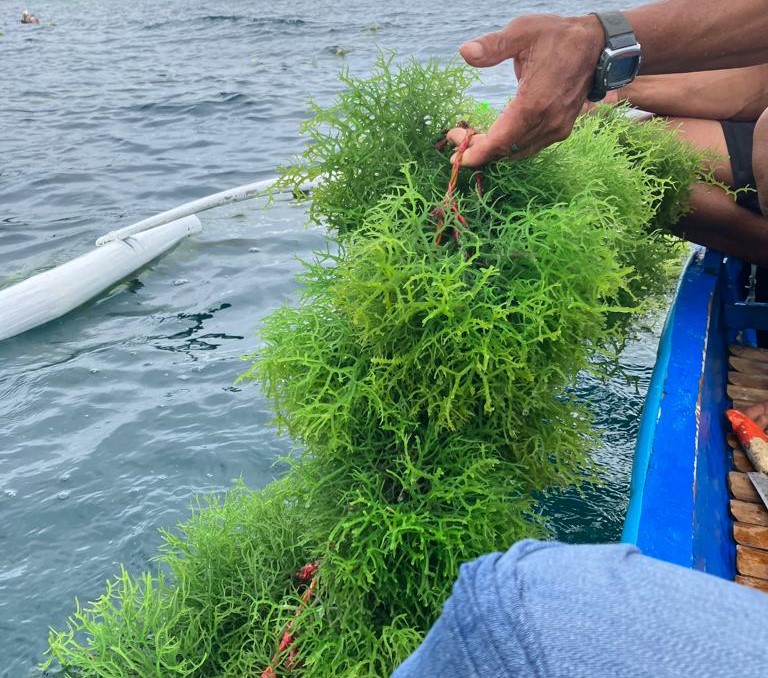Growing Seaweed

Seaweed is an efficient carbon sequestering plant due to its fast growth and high carbon fixation rates. It can grow up to 30 times faster than land-based plants and absorbs CO2 through photosynthesis, storing large amounts of carbon and mitigating climate change.
Creating value-added products from seaweed, such as food, fertilizer, animal feed, and biofuel, can support its economic viability and provide sustainable alternatives to high-carbon footprint products.
Kelp forests, important for coastal ecosystems, are declining globally due to ocean acidification, overfishing, and warming water temperatures.
Seaweed Breeding and Propagation
Seaweed propagation and breeding are important tools for maximizing the potential of seaweed as a climate solution. Seaweed breeding involves selecting and propagating seaweed varieties that have desirable traits, such as faster growth rates, higher biomass production, and greater carbon sequestration capabilities.
By selectively breeding seaweed varieties, researchers can develop strains that are better suited to particular environments and growing conditions, such as warmer or more acidic waters. This can improve the efficiency and sustainability of seaweed farming, as well as increase the carbon sequestration potential of seaweed.
Seaweed Conservation and Restoration
Seaweed restoration is a potential climate solution that involves the re-establishment of degraded or lost seaweed populations in marine environments. Seaweed plays a critical role in marine ecosystems, providing habitat and food for a variety of marine species, as well as contributing to nutrient cycling and carbon sequestration. However, seaweed populations around the world have been declining due to a variety of factors, including pollution, climate change, and overfishing.
Seaweed restoration can help address these declines and restore the ecological function and benefits of seaweed populations. Seaweed restoration can involve the transplantation of seaweed fragments or spores into degraded areas, or the creation of artificial seaweed reefs or structures that provide habitat for seaweed and associated species.
Seaweed Farming and Harvesting
Seaweed farming involves the cultivation of seaweed in marine environments using different methods such as longlines, rafts, and nets.
Seaweed farming can provide a number of benefits for the environment, such as carbon sequestration, habitat creation, and nutrient removal.
Harvesting seaweed from natural populations in the wild or from seaweed farms can help reduce the effects of eutrophication, which is the overgrowth of algae and other aquatic plants due to nutrient pollution.
Take Action
Find out more about Seaweed Climateers by browsing this site’s menu.
Then head over to our main Climateers launch site to find out how Seaweed fits within our growing network of hundreds of Climate Solutions.
You can then Join Free today and become a founding member.
We have position vacancies for volunteers and for staff to help grow our network of local Seaweed ecosystems that are collaborating to end Seaweed.
Join FREE today and become a
Founding Member at Climateers.com
Seaweed Climateers is part of the wider global network of Climate Solutions Ecosystems.
On March 22nd 2023 we have prelaunched Climateers ahead of our main May launch.
By joining our mailing list for free today you can become one of the 10,000 Founding members at Climateers.
You’ll receive lifetime Founding Member benefits including bragging rights of helping to create the Social Tipping Point to help rewrite the end of the Climate Crisis story.
